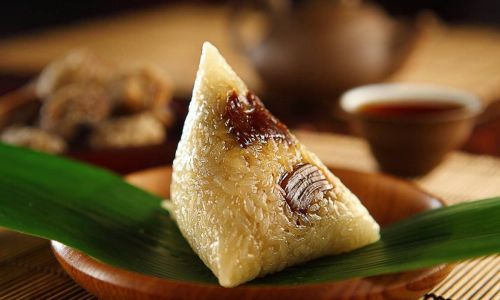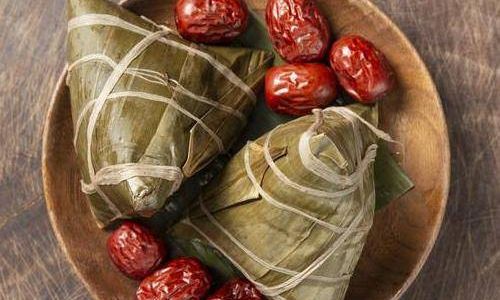Table of content
White croaker (Pennahia argentata), a prized ingredient in Asian cuisine, is celebrated for its delicate flavor, tender texture, and versatility in the kitchen. Often referred to as “white goby” or “silver croaker,” this fish thrives in coastal waters and is a staple in dishes ranging from simple steamed preparations to complex braised stews. For home cooks and culinary enthusiasts alike, mastering the techniques to elevate white croaker’s natural taste while avoiding common pitfalls—such as overcooking or bland seasoning—is key to creating memorable meals. This article delves into the nuances of selecting, preparing, and cooking white croaker, offering step-by-step recipes, tips from seasoned chefs, and creative twists to transform this humble fish into a star dish.
Understanding White Croaker: Flavor Profile and Culinary Uses
White croaker’s mild, slightly sweet flavor makes it an ideal canvas for bold seasonings or subtle accompaniments. Unlike stronger-tasting fish like mackerel or salmon, its flesh remains tender and flaky when cooked properly, absorbing flavors without becoming mushy. This adaptability allows it to shine in steaming, pan-frying, baking, and even deep-frying. In Chinese cuisine, it is often steamed with ginger and soy sauce, while in Korean kitchens, it might be simmered in a spicy broth for maeuntang (spicy fish stew). Understanding the fish’s characteristics is the first step to unlocking its potential.
Selecting the Freshest White Croaker
The foundation of a great dish begins with sourcing the freshest fish. When purchasing whole white croaker, look for clear, bright eyes (not cloudy or sunken), shiny skin with tight scales, and a firm, elastic texture when pressed. Avoid fish with a strong “fishy” odor, as this indicates spoilage. If buying fillets, ensure they are moist, translucent, and free of brown edges or ice crystals (a sign of freezing and thawing).
Pro Tip: Ask your fishmonger to gut and scale the fish if you’re short on time, but preparing it yourself ensures better control over cleanliness.

Preparation: Cleaning and Marinating
Cleaning
- Scaling: Use the back of a knife to scrape off scales under cold running water. Work from tail to head to avoid splattering.
- Gutting: Make a shallow cut along the belly, remove the intestines, and rinse the cavity thoroughly.
- Gills: Remove the gills, as they can impart bitterness if left intact.
Marinating
Marinating enhances flavor and tenderizes the flesh. A simple marinade of:
- 2 tbsp soy sauce
- 1 tbsp rice wine (or mirin)
- 1 tsp sesame oil
- 1 tbsp grated ginger
- 1 minced garlic clove
Apply evenly to the fish and let it sit for 15–30 minutes. For fillets, reduce marinating time to 10 minutes to prevent sogginess.
Cooking Methods: From Classic to Creative
Steamed White Croaker with Ginger and Scallions
A timeless Cantonese favorite, steaming preserves the fish’s natural flavors while infusing it with aromatic ingredients.
Ingredients (serves 4):
- 2 whole white croakers (1–1.2 lbs each), cleaned
- 3 tbsp soy sauce
- 2 tbsp peanut oil (or vegetable oil)
- 1 tbsp Shaoxing wine
- 1 tbsp fresh ginger, julienned
- 4 scallions, cut into 3-inch strips
- 1 red chili, thinly sliced (optional)
- 1 tsp sugar
Instructions:
- Place fish on a heatproof plate. Stuff cavities with half the ginger and scallions.
- Steam over high heat for 10–12 minutes (until flesh turns opaque).
- In a small saucepan, heat oil until smoking. Remove from heat and stir in remaining ginger, scallions, chili, soy sauce, Shaoxing wine, and sugar.
- Drizzle the hot sauce over the fish and serve immediately with steamed rice.
Chef’s Note: For added depth, add a few slices of fermented black beans to the marinade.
Pan-Fried White Croaker with Lemon-Butter Sauce
Crispy-skinned pan-fried fillets paired with a tangy sauce offer a Western twist.
Ingredients (serves 4):
- 4 white croaker fillets (6 oz each)
- 1/2 cup all-purpose flour (for dredging)
- 4 tbsp unsalted butter
- 2 tbsp olive oil
- 1 lemon, juiced and zested
- 2 garlic cloves, minced
- 1/4 cup fresh parsley, chopped
- Salt and pepper to taste
Instructions:
- Pat fillets dry. Season with salt and pepper, then dredge in flour, shaking off excess.
- Heat olive oil in a skillet over medium-high. Fry fillets skin-side down for 3–4 minutes until golden. Flip and cook 2 more minutes. Remove and keep warm.
- In the same pan, melt butter. Add garlic and sauté 1 minute. Stir in lemon juice, zest, and parsley.
- Spoon sauce over fillets and serve with roasted vegetables.
Pro Tip: For extra crispiness, use a cast-iron skillet and ensure the oil is hot before adding the fish.
Braised White Croaker in Black Bean Sauce
A savory, umami-rich dish popular in Chinese households.

Ingredients (serves 4):
- 2 whole white croakers
- 3 tbsp fermented black beans, rinsed and minced
- 4 garlic cloves, minced
- 1 tbsp ginger, minced
- 1 red bell pepper, sliced
- 1/2 cup chicken broth
- 2 tbsp soy sauce
- 1 tbsp oyster sauce
- 1 tbsp cornstarch (mixed with 2 tbsp water)
- 2 tbsp vegetable oil
- Cilantro for garnish
Instructions:
- Pat fish dry. Heat oil in a wok, then fry fish until golden (3–4 minutes per side). Set aside.
- In the same wok, stir-fry black beans, garlic, and ginger until fragrant. Add bell pepper and stir-fry 2 minutes.
- Pour in broth, soy sauce, and oyster sauce. Bring to a simmer.
- Return fish to the wok, spooning sauce over them. Cover and braise 8–10 minutes.
- Thicken sauce with cornstarch slurry. Garnish with cilantro.
Variation: Add diced tomatoes or mushrooms for extra depth.
Baked White Croaker en Papillote
A healthy, no-fuss method where fish steams in parchment paper with aromatic vegetables.
Ingredients (serves 4):
- 4 white croaker fillets
- 1 lemon, thinly sliced
- 1 fennel bulb, thinly sliced
- 1/4 cup cherry tomatoes, halved
- 4 sprigs fresh thyme
- 2 tbsp olive oil
- Salt and pepper
Instructions:
- Preheat oven to 400°F (200°C). Cut four 15×15-inch parchment squares.
- Layer vegetables and thyme on one half of each parchment. Top with a fillet, drizzle with oil, and season.
- Fold parchment over fish and crimp edges to seal. Bake 15–18 minutes.
- Serve packets on plates, allowing diners to open them at the table.
Tip: Use asparagus or zucchini instead of fennel for a different flavor profile.
Expert Tips for Perfect White Croaker
- Avoid Overcooking: Fish is done when the flesh flakes easily with a fork. Overcooking turns it dry and crumbly.
- Skin-On vs. Skin-Off: Cook skin-on for crispiness (pan-frying) or remove it for delicate steaming.
- Acidic Marinades: Use citrus or vinegar sparingly, as prolonged exposure can “cook” the fish (like ceviche).
- Pairing: Serve with light wines (Sauvignon Blanc) or crisp lagers to complement, not overpower, the fish.
Creative Twists and Leftovers
- Fish Cakes: Shred leftover cooked fish, mix with mashed potato, breadcrumbs, and herbs. Pan-fry until golden.
- Fish Tacos: Flake pan-fried fillets into tortillas with slaw, avocado, and lime crema.
- Soup Base: Simmer bones and heads with vegetables for a flavorful broth.
Health Benefits of White Croaker
Low in fat and high in protein, white croaker is rich in omega-3 fatty acids, which support heart and brain health. It’s also a good source of selenium and vitamin B12.
Conclusion
White croaker’s versatility makes it a rewarding ingredient for cooks of all skill levels. Whether embracing tradition with steamed preparations or experimenting with global flavors, the key lies in respecting the fish’s delicate nature while allowing creativity to shine. With the right techniques and a dash of inspiration, this humble fish can become the centerpiece of unforgettable meals. So next time you spot white croaker at the market, don’t hesitate—let your culinary imagination swim free!






0 comments